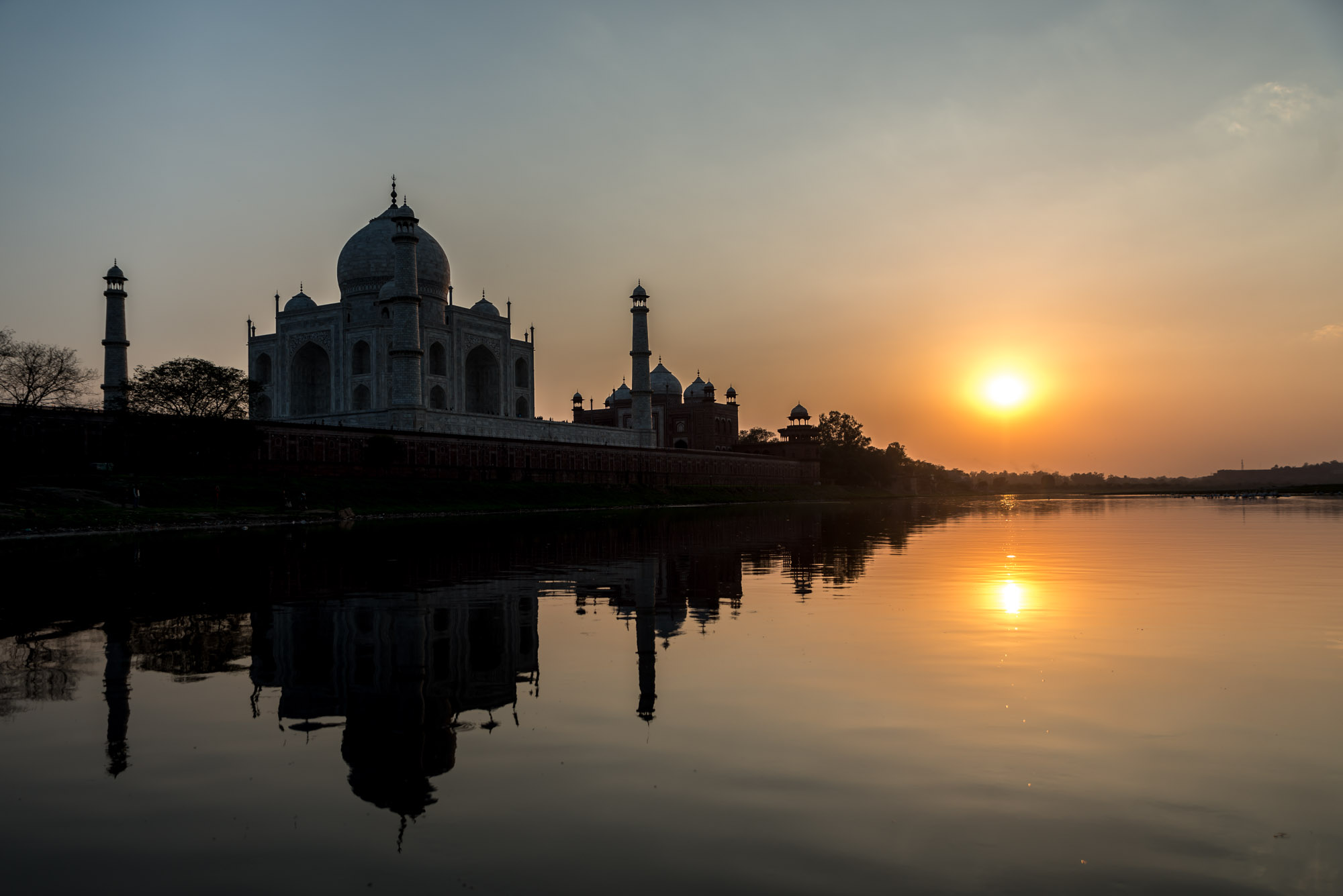TAJ MAHAL PHOTO TIPS
By Ian Robert Knight
The Taj Mahal is one of the most visited locations in the world. Indeed, when you’re there, you’ll feel like much of the world is with you. The Taj Mahal is located in the north-central city of Agra, Uttar Pradesh, India. As most people know, India can get pretty hot in the summer months. I visited in early March, which was had quite comfortable daytime temperatures and cool evenings. Overall, the Taj Mahal attracts more than 3 million visitors per year, much of them in the cooler months. Read on for some great Taj Mahal Photo Tips.
The building itself truly is beautiful. It’s often referred to as one of the most beautiful buildings in the world. It is certainly the most impressive mausoleum that I’ve ever seen. Mughal ruler Shah Jahan built the Taj Mahal in the mid 1600’s in honour of his favourite wife, Mumtaz Mahal who died while giving birth.
The structure is built with white marble, and is quite detailed at close inspection. There are two red sandstone buildings on either side of the Taj, one being a mosque, and the other a guesthouse. There are a couple of long reflecting pools leading up to the main building, plus a large square garden area. Both elements are great to help frame your photos of the Taj Mahal.
When to Visit
During my March trip, I visited the complex a few times, trying to get the best images possible. The Taj Mahal, a UNESCO World Heritage site since 1983, is open every day except Friday, from sunrise to sunset. My first visit in was close to the end of the day, when the crowds were waning. There were still plenty of people to work around, but I still managed to get some decent people-free images.
I was fortunate to have pretty clear days when I was there. Like many cities in India, Agra can get quite smoggy year round, and quite foggy or misty in the winter. Towards the end of the day the light was quite soft, and provided me with the ideal colours and tones on the white marble.
Leave it at the Hotel
The Taj Mahal complex does not allow tripods on it’s property. In fact, there are many things you cannot bring into the complex – including books, notepads, video cameras, extra batteries, flashlights, food, foreign flags, pens, and newspapers. The list goes on, and many items don’t seem to make much sense, but they are restricted just the same. I ‘donated’ a small pocket flashlight to the cause. I hope it likes it’s new home.
The property is quite large, and it takes a long time to get through it all. You can enter the mausoleum itself, but you can’t take any photos inside. It’s quite dark inside (where was my flashlight?) and not a lot to see. Clearly the exterior of the building is what you’re there for anyway. I spent a lot of time waiting for people to move away from my scene, in order to get some images with few distractions. Although this is a challenge, it’s not impossible.
The closer you are to the reflecting pools, the more people you will be around. If you move off to the sides in the garden areas, you will be more to yourself. The garden areas are really quite impressive too, with plenty of old trees that will allow you to frame the Taj.
I also learned that if you go early in the morning, there will be considerably less people with you. The site opens at sunrise, but the lineups form about an hour earlier. The East entrance to the complex is the busiest, and the South and West entrances will afford a faster entry. But plan to get there early for the best results.
The River View
The Taj Mahal was built just above the Yamuna River. This river can also be a great foreground detail for photographs. The river is not exactly clean, but it is functional. There is a small boat operator that will push a boat along the river for you, for about 200 rupees for 20 minutes. It’s well worth it, I think. I hired this boater twice – once at sunrise and again at sunset, and I was surprised it was not busier. I think the water level was pretty low, or perhaps that is all the time now. There is no traffic on the river, so if there is no wind, you’ll get nice reflections on the water’s surface at either time of day.
Taj Mahal Photography Tips
- Visit in the cooler months if possible
- Avoid the crowds by visiting early mornings or late in the afternoon
- No tripods allowed. Not even small ones. No storage places, so leave it at your hotel
- Use the trees to frame the structure
- Be patient – people will eventually get out of your photo
- Shoot from the Yamuna river, by small boat
- You’ll need a wide lens, as the structure is quite large
- Bracket exposures to ensure you capture the best light
- Use people in your photos for scale
- Capture details in the marble
Photo Workshop Adventures visits the Taj Mahal a few times per year, during the Rajasthan Adventure and the Pushkar Camel Fair. If you’re keen on experiencing the Taj Mahal with us as part of a group, or on a private journey, please get in touch with us. We’d love to help you visit this fascinating destination.
















thank you thinkorangemagazine for giving me wonderful information